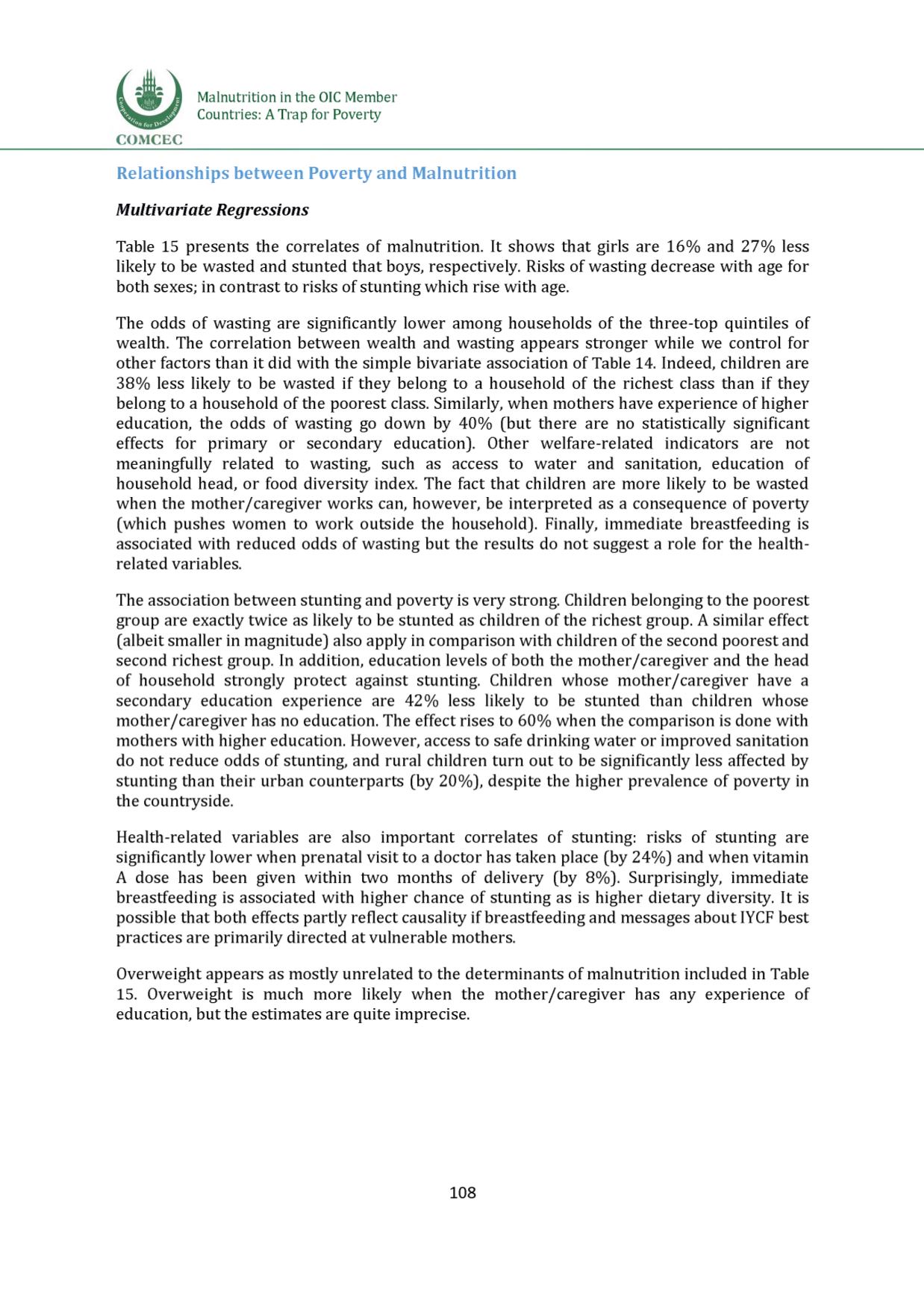

COMCEC
Malnutrition in the OIC Member
Countries: A Trap for Poverty
Relationships between Poverty and Malnutrition
Multivariate Regressions
Table 15 presents the correlates of malnutrition. It shows that girls are 16% and 27% less
likely to be wasted and stunted that boys, respectively. Risks of wasting decrease with age for
both sexes; in contrast to risks of stunting which rise with age.
The odds of wasting are significantly lower among households of the three-top quintiles of
wealth. The correlation between wealth and wasting appears stronger while we control for
other factors than it did with the simple bivariate association
of Table 14. Indeed, children are
38% less likely to be wasted if they belong to a household of the richest class than if they
belong to a household of the poorest class. Similarly, when mothers have experience of higher
education, the odds of wasting go down by 40% (but there are no statistically significant
effects for primary or secondary education). Other welfare-related indicators are not
meaningfully related to wasting, such as access to water and sanitation, education of
household head, or food diversity index. The fact that children are more likely to be wasted
when the mother/caregiver works can, however, be interpreted as a consequence of poverty
(which pushes women to work outside the household). Finally, immediate breastfeeding is
associated with reduced odds of wasting but the results do not suggest a role for the health-
related variables.
The association between stunting and poverty is very strong. Children belonging to the poorest
group are exactly twice as likely to be stunted as children of the richest group. A similar effect
(albeit smaller in magnitude) also apply in comparison with children of the second poorest and
second richest group. In addition, education levels of both the mother/caregiver and the head
of household strongly protect against stunting. Children whose mother/caregiver have a
secondary education experience are 42% less likely to be stunted than children whose
mother/caregiver has no education. The effect rises to 60% when the comparison is done with
mothers with higher education. However, access to safe drinking water or improved sanitation
do not reduce odds of stunting, and rural children turn out to be significantly less affected by
stunting than their urban counterparts (by
2 0
%), despite the higher prevalence of poverty in
the countryside.
Health-related variables are also important correlates of stunting: risks of stunting are
significantly lower when prenatal visit to a doctor has taken place (by 24%) and when vitamin
A dose has been given within two months of delivery (by
8
%). Surprisingly, immediate
breastfeeding is associated with higher chance of stunting as is higher dietary diversity. It is
possible that both effects partly reflect causality if breastfeeding and messages about IYCF best
practices are primarily directed at vulnerable mothers.
Overweight appears as mostly unrelated to the determinants of malnutrition included i
n Table 15. Overweight is much more likely when the mother/caregiver has any experience of
education, but the estimates are quite imprecise.
108
















